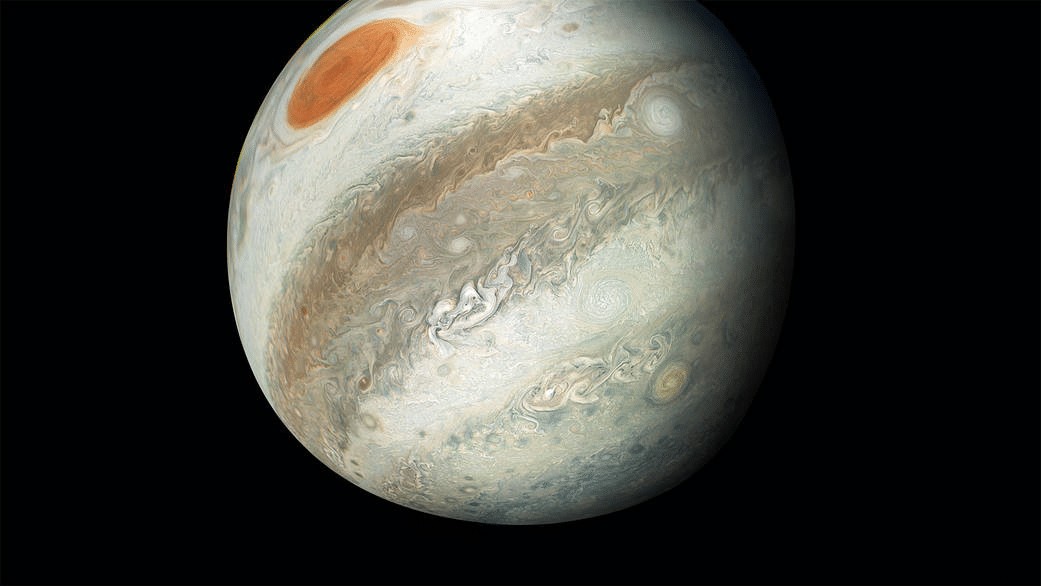It is difficult to grasp the magnitude of Jupiter's Great Red Spot as the storm is so big. It turns out that this huge vortex isn't just wide:it's also much deeper than expected.
Wedged between two conveyor belts that move in opposite directions leading it to evolve counter-clockwise, Jupiter's Great Red Spot has endured for over 400 years old . Wide of about 16,000 km , it is the largest atmospheric vortex in the Solar System. But how deep does it go? New work made possible by the Juno probe, which is still evolving in the Jovian system, has recently made it possible to estimate it. This research was the subject of a study published in the journal Science .
For this work, Dr. Marzia Parisi and her team relied on the movement of the spacecraft itself. As Juno flew past the Great Red Spot, gravitational anomalies due to localized densities slightly altered the speed of its orbit around the planet. These gravity measurements can then be used to determine the depth of the atmospheric structure.
With this information, the researchers then detected enough fluctuations in Jupiter's gravitational field to estimate the depth of the storm:about 500 kilometers , a few tens of kilometers deeper than previously estimated. For comparison, that's deeper than the distance from the Earth's surface to the International Space Station.
Finally, let's remember that the Great Red Spot finds itself stuck between two conveyors that are moving in opposite directions. These jet streams, which encompass the storm, can travel at nearly 350 km/h, thus continuing to feed the momentum in the vortex. What this study also tells us is that these two currents go six times deeper than the roots of the Great Red Spot .
As these jets are crucial in fueling the Great Red Spot, these differences in depth thus add to the mystery surrounding how the Jovian atmosphere can produce such spectacular storms.

Nothing lasts forever. We know that Jupiter's Great Red Spot keeps shrinking. In the late 1800s, the storm was indeed four times the diameter of the Earth. By the time Voyager 2 passed in 1979, the vortex had already shrunk to just over twice the width of our own planet. Now it is only 1.3 times the size of the Earth. According to some estimates, it could therefore disappear .
In the meantime, remember that Juno's mission, which has been performing long looping orbits around Jupiter since 2016, was recently extended to 2025 . If all goes as planned, the probe's orbital path will soon take it over the planet's north pole. Its instruments will then be able to observe and analyze other curiosities such as polar cyclones. New overflights of Io and Europa are also planned.